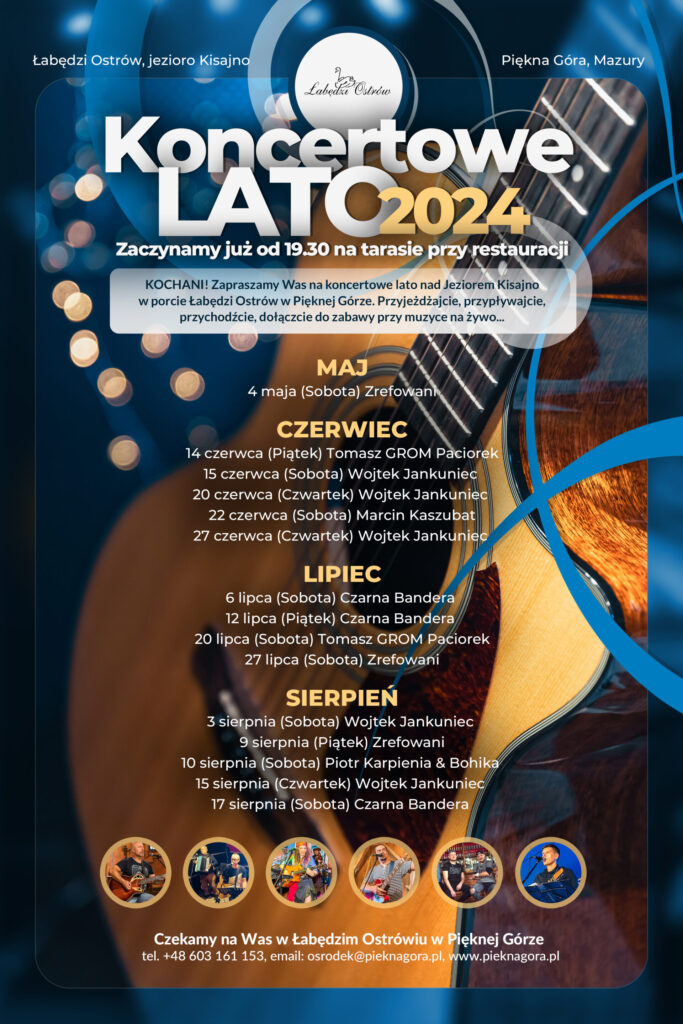Tourist attractions
Excursions for nature lovers
In the Masurian Lake District the living nature is everywhere. It is enough to go outside the borders of tourist resorts to encounter not only, unique in Europe, landscape and plant forms, but also meet the local inhabitants of the animal world, even so rarely found as wolf, or white-tailed eagle. White-tailed eagles have multiplied generously in the basin of the Lake Mamry of the Masurian Lake District and it is easiest to find them on the Lake Dobskie, where they eagerly prey on cormorants.
Route along the castles of the Teutonic Order
This is the longest of all available sightseeing routes reaching on the West as far as beyond the borders of Warmia Region, so it is necessary to take the car and set out early on the trip. From Giżycko we go West, down the road to Olsztyn. Through Wilkasy, Szczybały Giżyckie, Skop and Tros we reach a small town, Ryn, situated 24 km south-west from Giżycko. Ryn is overlooked by a large mass of the old castle of the Teutonic Order, converted into a Renaissance building.
Canoeing
Masurian waters are not just the lakes. We will find here many very enchanting rivers that are great for canoeing trips. The queen of Masurian rivers is Krutynia, whose full canoeing route from Sorkwity to Ruciane-Nida is 102 km long, including 60 km running through numerous, beautiful lakes, that are situated along the route. Nearly entire canoeing route of Krutynia River runs through the backwoods of Puszcza Piska Forest, and from Spychów – across the Masurian Landscape Park. The River reaches its proper end flowing into Iznocka Bay of Lake Bełdany along the Great Masurian Lakes trail.
source: http://mazury.info.pl
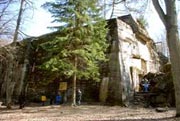 |
Gierłoż – Hitler’s HeadquartersIn July 1940 the founder of “Organisation Todt”, 50-year-old Generalmajor engineer Fritz Todt was assigned a task of building a secret facility in die Görlitz (Gierłoż). Todt’s engineers were first-class engineers specialising in building military fortifications and bunkers. That is why he was the one to be entrusted with preparation of one of the most famous and most secret facilities of World War II – Kętrzyn Headquarters, known by the name “Wolf’s Lair” – “die Wolfsschanze”. |
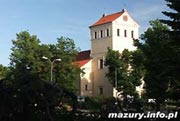 |
Giżycko – Organ recitalsUnquestionably the organ recitals organized in the Evangelical Church in Giżycko are a great tourist attraction. The Evangelical Church of the Augsburg Confession is located at Grunwaldzki Square. The cornerstone was laid on May 11th, 1826. In 1881 windows were enlarged, apse and sacristy were added, altar and pulpit were modified. The altar is decorated with paintings of outstanding Berlin painter, Carl Gottfried Pfannschmidt. |
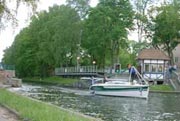 |
Revolving Bridge in GiżyckoThe revolving bridge was built in 1889 by company Bechelt C.O. Grundberg und Shel from Zielona Góra. It was built to ensure convenient connection between the city and Boyen Fortress build in 1844-1857. Engineers of the time constructed more then 20-metre long and 8-metre wide mobile span with an original method for moving to the sides instead of upwards as it was practices in traditional structures of this sort. |
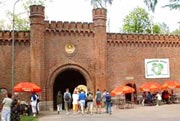 |
BOYEN Fortress – GiżyckoBoyen Fortress erected within 1844-1856 is remarkably well preserved example of Prussian school of fortifications. Located west of Giżycko, at the narrow inlet between large lakes, Niegocin and Kisajno, it was a main link in the chain of fortifications closing the access to the State of Prussia from the east. It was built on the area of approx. 100 ha and constituted an extremely important strategic facility of East Prussia. |
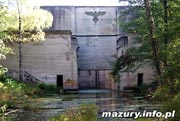 |
Masurian Canal – Water connection between Masurian Lake District and the Baltic SeaThe canal was built to channel north the waters from Great Masurian Lakes to the River Pregoła in order to obtain a waterway to the Baltic Sea and use water power to move water power plants and dry about 17 thousand hectares of meadowland. Some people claim that the Masurian Canal was planned as a waterway for U-Boot submarines, and there was a repair and renovation facility planned to be erected for these units in the Masurian District. However the dimensions of locks – 45 x 7.5 m and depth of approx. 2 m – contradict these speculations. |
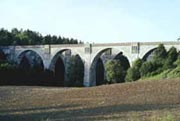 |
Stańczyki – Historic BridgesNorthern ends of the Masurian Lake District are one of the most seldom visited spots in the country. It is here, among the picturesque hills and meadows, outside the village Stańczyki, where huge viaducts of closed railway line Gołdap – Żytkiejmy (31 km) are located. The bridges in Stańczyki are the highest ones along the line and one of the highest in Poland. Length – 200 m and height – 36 m. Five-span reinforced concrete structure with equal 15-metre arches. The architecture is distinguished by remarkable proportions and the piers are decorated with elements modelled after Roman aqueducts in Pont du Gard. That is the source of the name – “The aqueducts of Romincka Forest”. |
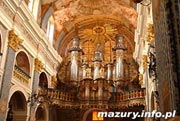 |
The Sanctuary ŚWIĘTA LIPKA – Częstochowa of the NorthŚwięta Lipka – this small town has been a well-know site already since the 15th century as the destination of numerous pilgrimages. It is located near Kętrzyn on Lake Dejnowo. Each year more than 100 thousand tourists who travel to the Masurian Lake District, visit located here Marian Sancturay. Due to numerous groups of pilgrims, Święta Lipka is often referred to as “Częstochowa of the North”. [Częstochowa – most popular destination of pilgrimages in Poland]. |





